.
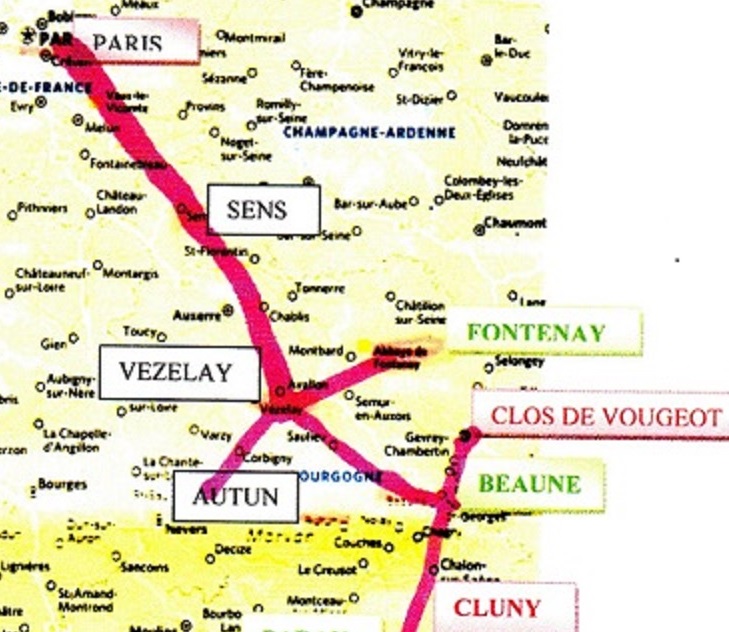
FRANCE 2012
Day 7 , Sunday, Sept 9
BEAUNE TO CLUNY
We had breakfast in our Beaune hotel
courtyard, packed up and checked out about 11:30.. It was about a 45
minute drive to Cluny. All of the ďAĒ roads have a speed limit of 130
kms, which is 80 miles an hour. As on the autobahn in Germany (no speed
limit), people stay in the right lane except to pass. Generally trucks
donít pass at all. We did pass a motorcyclist today who must have been
going 70 mph.
Not far out of
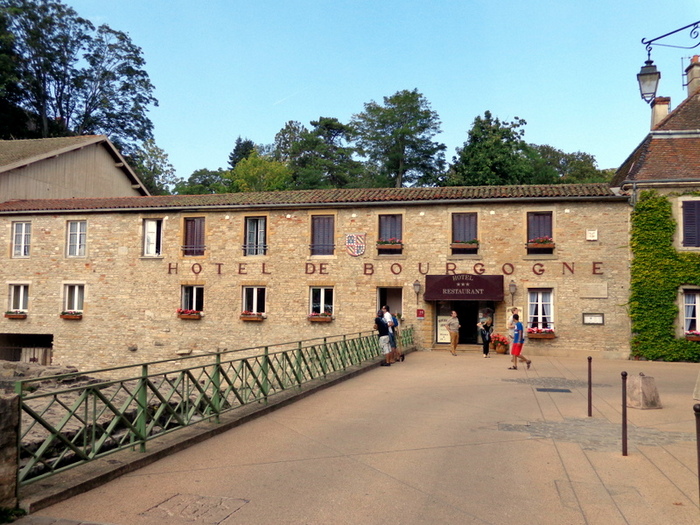 Beaune we stopped to buy diesel
fuel. Another slight problem in France is that many of the service
stations only cards with chips in them Ė and US cards donít have this
chip. So we must go to an attended gas station. We canít buy fuel in
town on Sunday, or late at night.
Beaune we stopped to buy diesel
fuel. Another slight problem in France is that many of the service
stations only cards with chips in them Ė and US cards donít have this
chip. So we must go to an attended gas station. We canít buy fuel in
town on Sunday, or late at night.
We got to Cluny about 1:00 and went through a
number of narrow streets to our hotel Ė Hotel de Bourgogne.
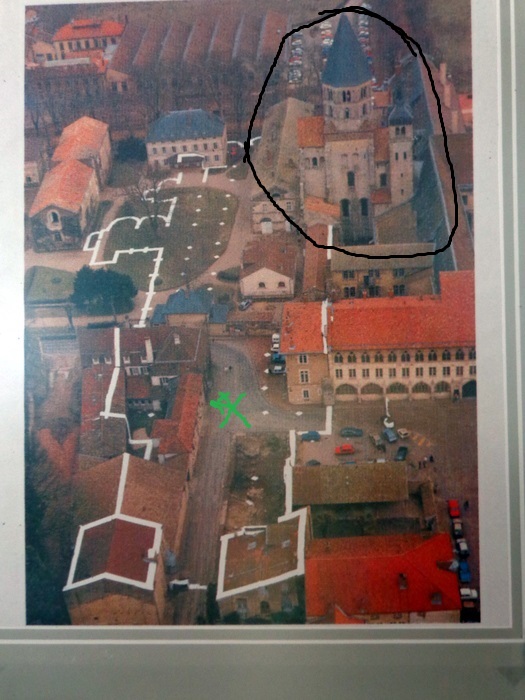
Cluny is small
town with a population of 4,585. The only remaining part of the abbey
is the right rear tower (circled building at the top right of photo). The
Hotel de Bourgogne is within the walls of the original Cluny Abbey. The
white outline on photo is the foot print of the original abbey.
The green "X" indicates our hotel
THE ABBEY OF CLUNY
The Abbey of Cluny The Abbey of Cluny,
founded by Benedictine monks, was the center of a major monastic
movement in the Middle Ages that would spread throughout Europe. Its
church was the largest Christian building in the world until St. Peter's
Basilica was rebuilt in Rome in the 16th century.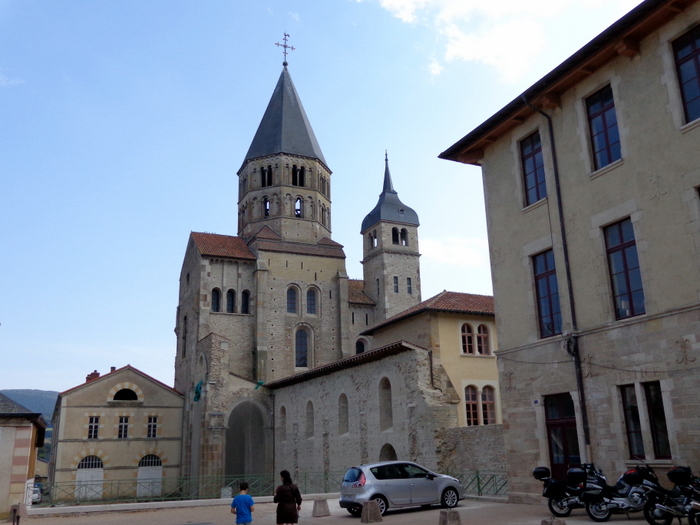
Today, one transept of the 12th century abbey
church remains, along with 15th-century abbots' residences and
18th-century convent buildings. The site also includes pleasant gardens
and a museum with Romanesque artifacts.
An uniqueness of Cluny was in its
administration. Before Cluny, most monasteries were autonomous and
associated with others only informally. But when new monasteries were
founded in the Cluniac tradition, they were designated "priories," not
abbeys, and were overseen by a prior who reported to the abbot of Cluny.
The abbot of Cluny made regular visits to these priories and the priors
met at Cluny once a year.
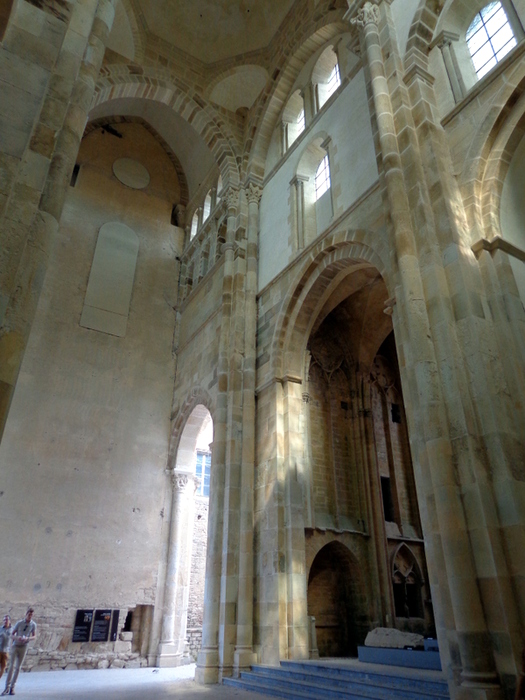
On September 30, 1088, construction began on
the third abbey church at Cluny ("Cluny III"). Financed by kings, for
centuries it was the largest church in Christendom. At its height of its
influence in the 12th century, Cluny was at the head of a monastic
"empire" of 10,000 monks. The abbots of Cluny were almost as powerful as
popes, and four of them later became popes.
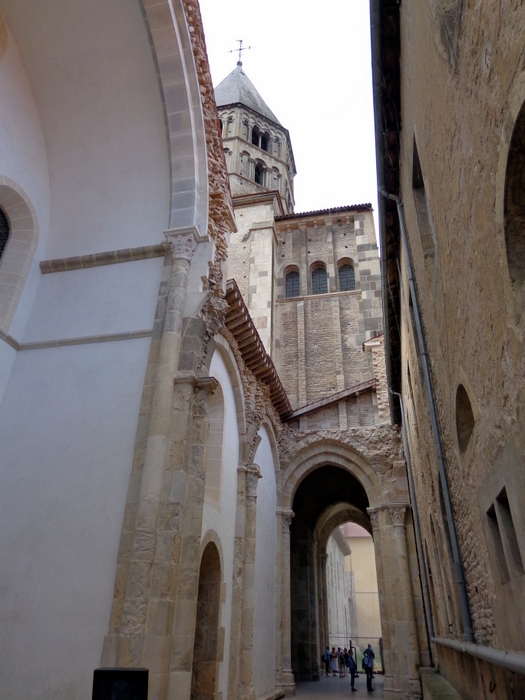 Cluny's great success was due in large
part to its abbots. The Abbey of Cluny was guided by an orderly
succession of able and educated abbots drawn from the highest
aristocratic circles, two of whom were canonized: Odo of Cluny, the
second abbot (died 942) and Hugh of Cluny (died 1109). Odilo, the fifth
abbot (died 1049), was a third great leader.
Cluny's great success was due in large
part to its abbots. The Abbey of Cluny was guided by an orderly
succession of able and educated abbots drawn from the highest
aristocratic circles, two of whom were canonized: Odo of Cluny, the
second abbot (died 942) and Hugh of Cluny (died 1109). Odilo, the fifth
abbot (died 1049), was a third great leader.
In the early 12th century, then, the order
began to lose momentum under poor government. Cluny was revitalized
under Abbot Peter the Venerable (d. 1156), who brought lax priories
back into line and returned to stricter discipline.
By the time of the French Revolution, the
order was suppressed in France and the monastery at Cluny was partly
demolished. The abbey was sold as national property and was used as a
stone quarry. In 1793 the Abby was closed and desecration began.
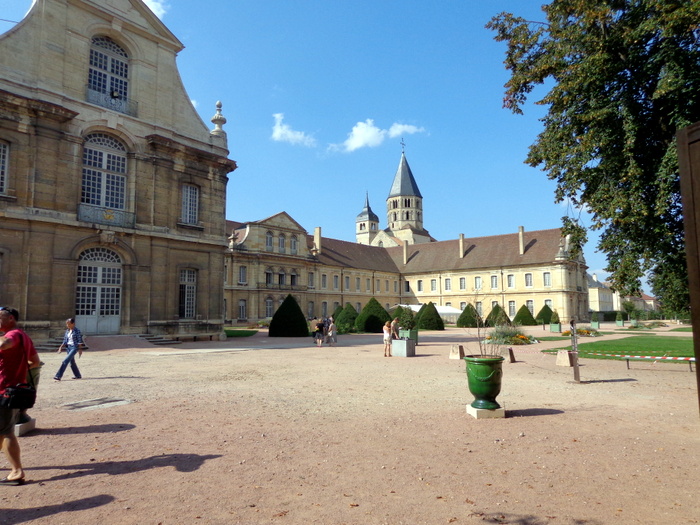 In
1798 the buildings were sold to speculators who knocked down the nave,
sold all of the stones bit by bit until all that was left was the one
tower you see today. In fact our hotel stands in part of the original
nave. To see what the original abbey looked like you can go to my
church models -French models. It was systematically dismantled until
1823.
In
1798 the buildings were sold to speculators who knocked down the nave,
sold all of the stones bit by bit until all that was left was the one
tower you see today. In fact our hotel stands in part of the original
nave. To see what the original abbey looked like you can go to my
church models -French models. It was systematically dismantled until
1823.
Our hotel was very attractive even though it
didn't have any elevators. We had a two room suite with a nice sitting
room with a fire place. I didn't expect that we will need that. The
early mornings and nights had been cool, but the days have all been very
sunny and hot. We needed lunch. The hot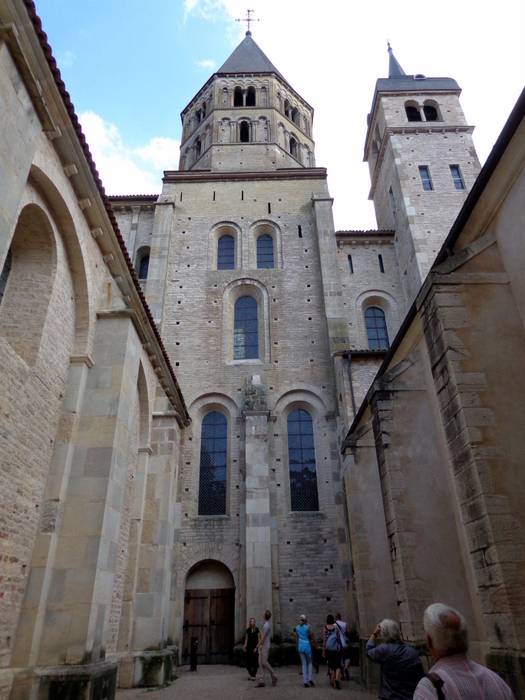 el has a beautiful garden but it
was full so we ate inside. I had a very nice white fish and my wife had
chicken.
el has a beautiful garden but it
was full so we ate inside. I had a very nice white fish and my wife had
chicken.
We then began exploring. The entrance to the
cloister and the tower are opposite our hotel. We spent several hours
walking around what was left of the church, then around the grounds.
It was interesting that in several places in the church, there was a
large screen monitor about 3í X 2í. It showed what the area that you
were looking at really looked like before the destruction. You could
move the screen about and see various parts of the former church. We
came out and explored more of the area within the outer walls.
We found another church - Notre Dame. 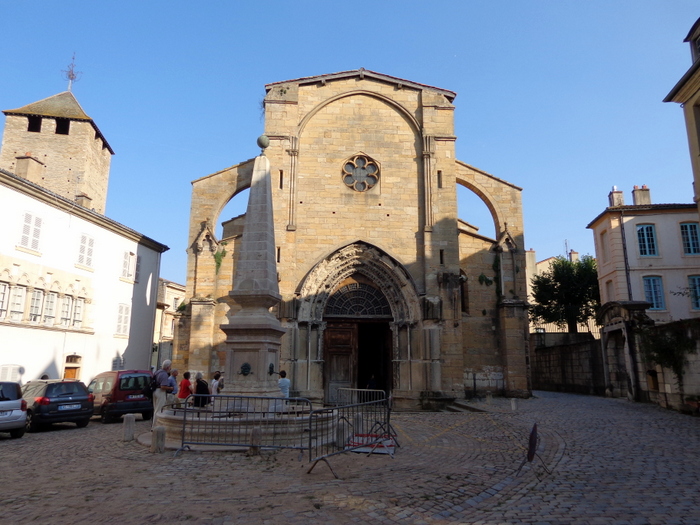 In
front of the church was a large square with an 18 century fountain and
old houses. The church, with its quadrangular bell tower, was built a
little after 1100, and extended in the Gothic era. Only the pavement is
left of the primitive narthex.
In
front of the church was a large square with an 18 century fountain and
old houses. The church, with its quadrangular bell tower, was built a
little after 1100, and extended in the Gothic era. Only the pavement is
left of the primitive narthex.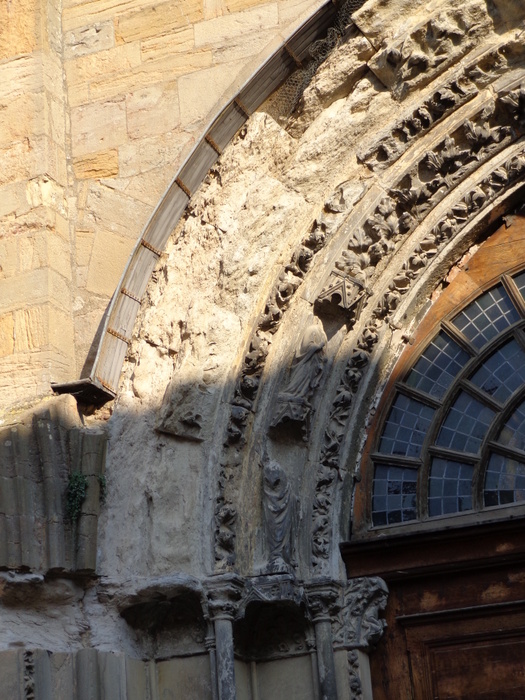
The 13 century portal is in poor condition.
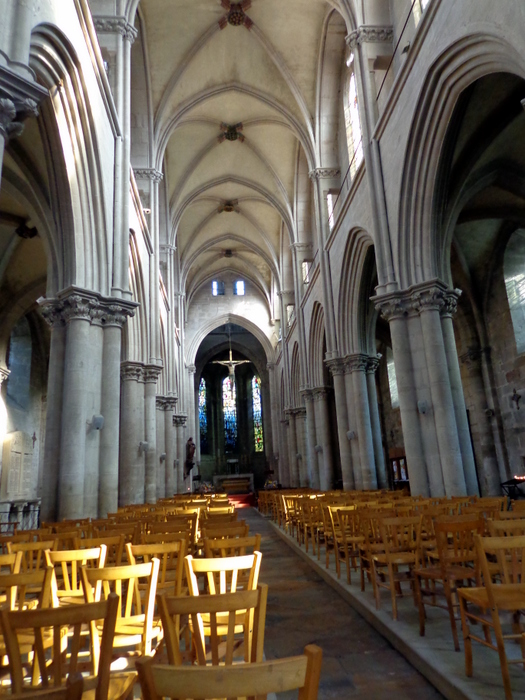
The interior was a good example of Cluniac architecture.
Near the ch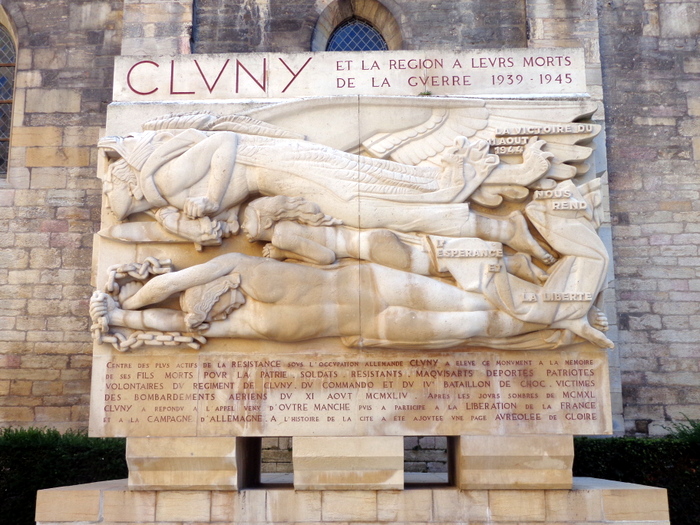 urch
was an interesting WWII memorial.
urch
was an interesting WWII memorial.
We were getting tired. We had made 7:30
reservations for the hotel dining room. It was a beautiful room. We
had the choice of much of the same menu that we had for lunch.
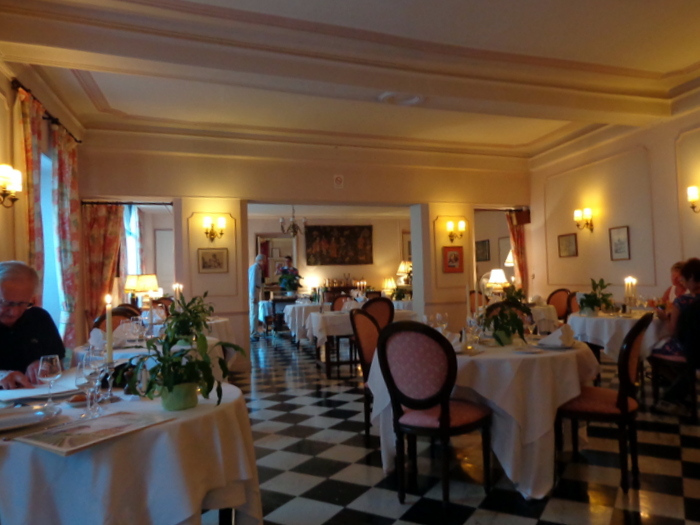 I had
veal and my wife had the fish that I had for lunch. We had a variety
of sorbets for dessert. There was a couple about our age sitting next
to us. They were speaking English, which we havenít heard very often,
so after dinner we started a conversation. They were from outside of
London and have been to all of the places we are going to visit on our
trip. We had a great time comparing notes on places that we have
been. We finished dinner about 9:30 which is better than 11:00 last
night. It is hard to believe that we left home a week ago today.
I had
veal and my wife had the fish that I had for lunch. We had a variety
of sorbets for dessert. There was a couple about our age sitting next
to us. They were speaking English, which we havenít heard very often,
so after dinner we started a conversation. They were from outside of
London and have been to all of the places we are going to visit on our
trip. We had a great time comparing notes on places that we have
been. We finished dinner about 9:30 which is better than 11:00 last
night. It is hard to believe that we left home a week ago today.

